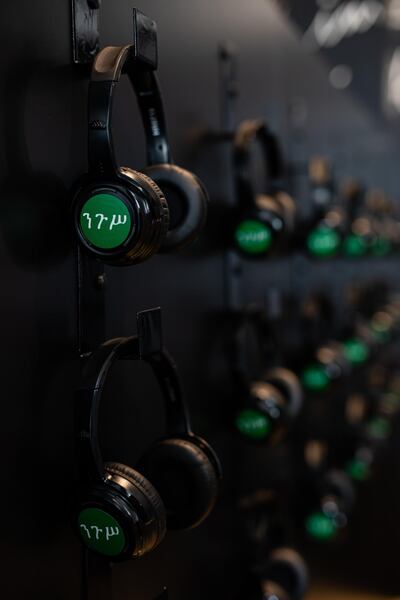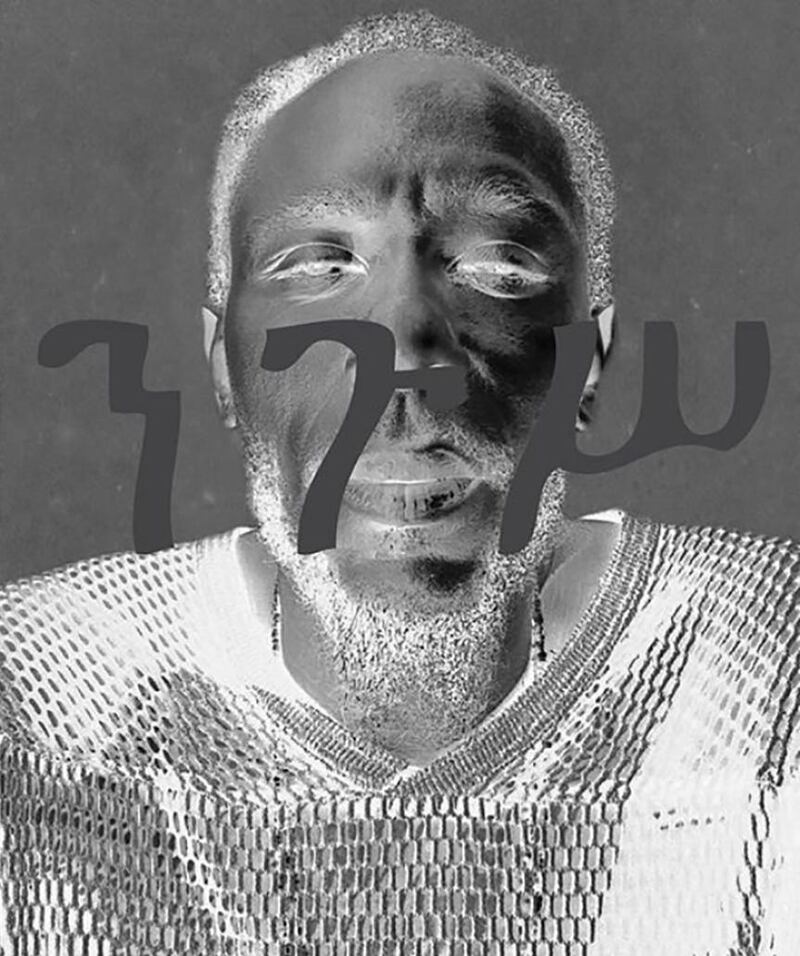Dubai's Alserkal Avenue is currently home to a piece of hip-hop history.
For the past six weeks, The Third Line gallery has been hosting Negus, an innovative audio visual exhibition that exclusively features music from revered rapper Yasiin Bey, formerly known as Mos Def.
After its 2019 premiere at the Brooklyn Museum of art, the installation went on to be staged at Art Basel Hong Kong and the Marrakesh Art Fair.
But Dubai is now the only city in the world where you can hear Bey's album, also called Negus, amid curated artwork and a short film.
With the exhibition closing on Wednesday, this is the last opportunity to experience a project that aims to redefine the way we listen to and consume music.
Here are five things to know about Negus.
1. It actually began in the UAE
For The Third Line, Negus is more of a homecoming than a new exhibition.
During a 2018 Dubai trip to perform at creative festival Sole DXB, Bey went to Alserkal Avenue to sample the local arts scene.
Upon meeting The Third Line's co-founder, Sunny Rahbar, Bey revealed that he had completed an album and wanted it to be heard in a specific location, as opposed to streaming, to ensure it got people’s attention.
What he was talking about, Rahbar recalled to The National, was a holistic sound installation. Soon after, the duo set to work on bringing Negus to light.
2. How does it work?

It’s a mix of art exhibition, film and concert.
Upon booking your listening session on the gallery website, you are requested to arrive 10 minutes before the session starts to go through the necessary procedures.
This means surrendering your mobile phone, which is placed in a locked pouch, and being given a pair of headphones that are controlled by the venue and synchronised with other visitors.
Upon entering the main gallery, you have a choice of taking a seat to watch the film or wandering around and viewing the art work while the album plays through the headphones.
Dancing and playing around with the many available balloons in situ is also encouraged.
3. The music is dark and reflective
Given that Bey went through all that trouble to ensure he got our attention, are the tunes worth listening too?
The answer depends on what kind of Bey fan you are.
If you are enamoured by the classic hip-hop sounds of his two pivotal albums, the collaborative project Black Star (1998) and Mos Def solo debut Black on Both Sides (1999), you may find the material underwhelming.
However, if you have been following Bey's eclectic and esoteric later albums, including the Mos Def albums True Magic (2006) and The Ecstatic (2009), then Negus offers its own thrills.
At 28 minutes-long, it is a taut and challenging work.
The production is primarily electro driven: there are abrasive synths, staccato percussion and dark waves of ambient noise. Bey matches the vibes with ruminative lyrics reflecting on everything from ancient Ethiopian history to US gun violence.
The fact that his voice is low in the mix and often heard only as a murmur highlights the insular nature of the work
Negus is more of a window into Bey's internal process and a tapestry of jumbled thoughts than a clear statement.
4. The art captures the mood
With Negus designed as a travelling exhibition, some of the art works are occasionally changed.
For the Dubai stop, Negus features paintings by Iranian-Americans Laleh Khorramian and Ala Ebtekar, as well Iranian Nima Nabavi and Morocco's Anuar Khalifi, who live in the UAE. While all contribute vivid nocturnal imagery – a standout being Khalifi's Maqam Negus, which was created for the exhibition – it's really the short film that links the sound and visuals.
Similar to Mos Def’s careening lyricism, the black-and-white film is a furious amalgam of historic and modern figures.
There are images of 19th century Ethiopian prince Alemayehu Tewodros, as well as slain Eritrean-American rapper Nipsey Hussle, along with demonstrations of prayers in mosques and churches.
With the occasional flashes of tender and warring animals, the video captures life in all its extremes, from mindless violence to the peace and serenity of faith.
5. 'Negus' is typical Yasiin Bey
Yasiin Bey wanted to give us an experience and, on that score, Negus is worth a visit.
The fact it is initially disorienting to listen to a piece of music without any distractions only goes to illustrate how rapaciously we consume it today. That increasingly rare sense of connection between the music and listener is worth the trip alone.
That said, Negus could use with some tune-ups. Despite the eclectic sounds, the album is hip-hop, therefore it needs to be heard loud.
The headphones being controlled by the venue resulted in a few frustrating moments where I would have liked to crank up the volume to match the intensity of the work.
And while the artwork served more as a distraction, the film does a great job of complementing and at times accentuating the themes of the album.
Both important and frustrating, Negus will go down as another chapter in the intriguing journey of one hip-hop's most enigmatic artists.
‘Negus’ is running at Third Line, Alserkal Avenue, Dubai until Wednesday. Hourly sessions run from 12pm-8pm daily and are limited to 20 tickets per session. Tickets are Dh75 from Virgin Megastore. For mMore information is at sole.digital/negus
___________________
Read more:
[ Yasiin Bey, aka Mos Def, opens art exhibition in collaboration with Dubai gallerist ]
[ Mos Def says the new Black Star album is 'ridiculous', 'golden' and almost finished ]
___________________






